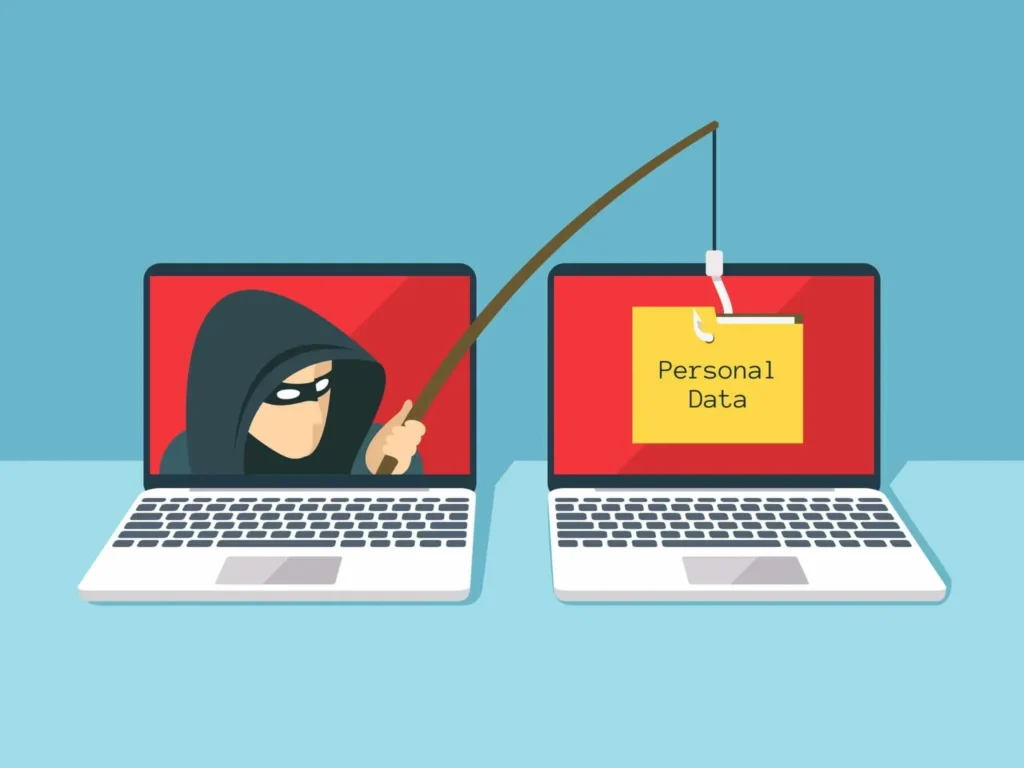Have you ever received a strange email or text that seemed a little too good to be true? You might be dealing with a phishing scam! These sneaky tricks are on the rise, especially now that smart technology like artificial intelligence (AI) is helping scammers create convincing messages. Phishing can happen through emails pretending to be from services we use every day, like Netflix or even ChatGPT! In this guide, we’ll explore some of the most common types of phishing scams, including how to spot them and what you can do to protect yourself. Let’s dive into the world of phishing and learn how to stay safe!
| Phishing Type | Description | Common Targets | Warning Signs |
|---|---|---|---|
| Phishing from AI accounts | Emails pretending to be from Open AI, trying to steal access to ChatGPT accounts. | Paid ChatGPT accounts | Urgent requests to update payment information within 7 days. |
| Streaming accounts | Emails asking users to update payment details for streaming services. | Netflix, Disney+ | Links to fake websites asking for login details. |
| Smishing | Text messages claiming to be from a relative needing money. | Anyone with a mobile phone | Messages that create a sense of urgency for financial help. |
| Password manager phishing | Fake login pages for password managers like LastPass. | Users of password managers | Automated calls prompting to authorize new device access. |
| PayPal and Klarna scams | Emails claiming accounts are blocked and need confirmation. | PayPal, Klarna users | Misleading buttons requesting personal details. |
Understanding Phishing Scams
Phishing scams are tricks used by criminals to steal personal information. These scams often appear as emails or messages that look real. For example, you might receive an email that seems to be from a bank or a popular website. The goal of the scammer is to get you to click on a link or give them your password. It’s important to know that these emails can be very convincing, making it hard to tell what’s real and what’s fake.
To protect yourself, always be cautious about the emails you receive. Look for signs like misspelled words or strange email addresses. If something feels off, don’t click any links. Instead, go directly to the website by typing the address in your browser. By being aware of phishing scams and knowing what to look for, you can keep your personal information safe.
The Rise of Smishing Scams
Smishing, or SMS phishing, is a growing problem where scammers send fake text messages. These messages often pretend to be from someone you know or a company you trust. For example, a message might say, “Hi, this is my new number!” If you respond, the scammer might ask for money for an emergency. This type of scam is especially tricky because it can feel personal, making you more likely to respond.
To avoid falling for smishing scams, remember to verify any unexpected messages. If someone claims to be a family member, call them directly to check. Never send money or personal information without confirming the request is real. By staying vigilant and questioning strange messages, you can help protect yourself from these sneaky scams.
Tips to Spot Phishing Emails
Identifying phishing emails can be challenging, but there are some easy tips to follow. Always check the sender’s email address carefully. Scammers often use addresses that look similar to real ones but have small differences. Additionally, look out for urgent language, like threats about account suspension, which can pressure you into acting quickly without thinking.
Another helpful tip is to hover over links before clicking. This will show you where the link actually goes. If it doesn’t match the website you expect, don’t click it! Finally, if you’re unsure about an email, search for its subject line online. Many people share their experiences with phishing attempts, and you might find out if others have received the same scam.
Understanding the Evolution of Phishing Scams
Phishing scams have evolved significantly over the years, moving from simple deceptive emails to sophisticated attacks utilizing advanced technologies. Criminals now leverage artificial intelligence tools to craft personalized messages that can easily trick unsuspecting victims. Unlike traditional phishing techniques, these modern scams often mimic legitimate communications from trusted companies, making it crucial for individuals to remain vigilant and informed about how these tactics have changed over time.
As phishing scams become increasingly intricate, understanding their evolution helps individuals develop better defense strategies. With the rise of AI-generated content, scammers can bypass many security filters that once caught their messages. Consequently, it’s essential for users to adopt a proactive approach, regularly updating their knowledge about the latest phishing trends and the psychological tactics employed by attackers to manipulate their targets.
The Psychological Tactics Behind Phishing
Phishing scams often exploit human psychology to increase their effectiveness. By creating a sense of urgency or fear, scammers can prompt individuals to act quickly without scrutinizing the email’s authenticity. For example, emails that threaten account suspension or loss of access can easily manipulate users into providing sensitive information, leading to severe financial repercussions.
Understanding these psychological tactics is vital for protecting oneself against phishing attacks. Individuals should train themselves to recognize red flags, such as unsolicited requests for personal information or messages that provoke immediate emotional responses. By remaining calm and critically assessing the situation, users can significantly reduce their chances of falling victim to these manipulative schemes.
Practical Steps to Enhance Online Security
To safeguard against phishing attacks, individuals should implement a multi-layered security approach. This includes using strong, unique passwords for different accounts and enabling two-factor authentication wherever possible. By adding an extra layer of security, even if attackers manage to obtain a password, they will still struggle to gain access without the second form of verification.
Regularly updating software and security systems is another practical step to enhance online security. Many phishing attacks exploit vulnerabilities in outdated software, making it crucial to keep all applications up-to-date. Furthermore, educating oneself about the latest phishing tactics and scams can help users remain vigilant and responsive to suspicious activities in their digital environments.
The Role of Technology in Phishing Prevention
Technology plays a critical role in combating phishing attempts. Advanced email filters and AI-powered security solutions can help identify and block phishing emails before they reach the inbox. These technologies analyze patterns and behaviors associated with known scams, providing users with an additional layer of defense against potential threats.
However, technology alone cannot eliminate the risk of phishing. Users must remain proactive and informed about best practices for recognizing phishing attempts. Combining technological solutions with user awareness creates a robust defense against phishing attacks, enabling individuals to navigate the digital landscape more safely and confidently.
Frequently Asked Questions
What is phishing and why should I be careful about it?
**Phishing** is a trick used by bad people to steal your personal information. It’s important to be careful because it can lead to losing money or accounts, like your email or streaming service.
How can I recognize a phishing email?
To spot a phishing email, check the sender’s address and look for strange words. **Urgent messages** or links that don’t look right can be signs that it’s a scam.
What is smishing and how does it work?
**Smishing** is a type of phishing done through text messages. Scammers may pretend to be someone you know and ask for money or personal info. Always verify before responding!
What should I do if I receive a suspicious email?
If you get a suspicious email, **don’t click** any links or respond. Instead, delete it or report it to someone who can help, like a parent or teacher.
Why do scammers target streaming services like Netflix?
Scammers target **streaming services** like Netflix because many people use them. They send fake emails to steal your login info, which can let them access your account.
What can happen if my password manager is hacked?
If a hacker gets into your **password manager**, they can access all your accounts. This is dangerous because they can steal money or personal info from your banking or email.
How can I protect myself from phishing scams?
To stay safe from phishing scams, use strong passwords, check emails carefully, and don’t share personal info unless you’re sure it’s safe. **Ask an adult** if you’re unsure!
Summary
The content discusses the rise of sophisticated phishing scams, particularly those utilizing AI technologies like ChatGPT. It highlights several types of phishing attacks, including those targeting paid AI accounts, streaming services, and password managers. Notably, criminals exploit urgency to trick victims into providing sensitive information through fake emails or smishing (SMS phishing). The article emphasizes the importance of vigilance in recognizing phishing attempts, advising users to verify sender addresses, scrutinize language, and hover over links before clicking. Overall, it aims to educate readers on how to protect themselves from these evolving cybersecurity threats.








